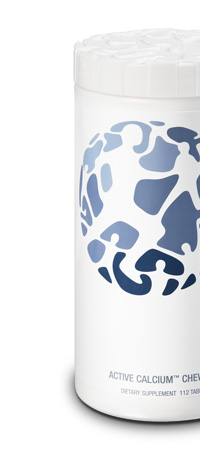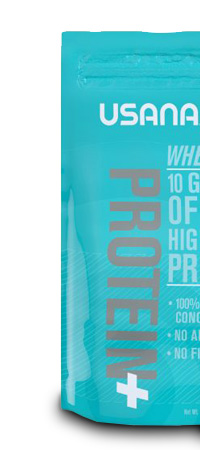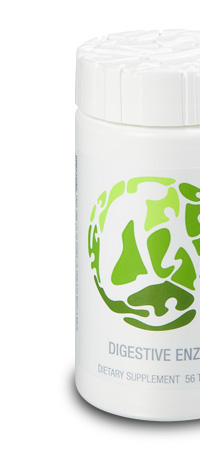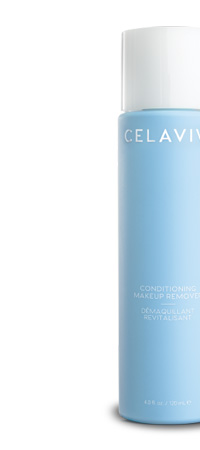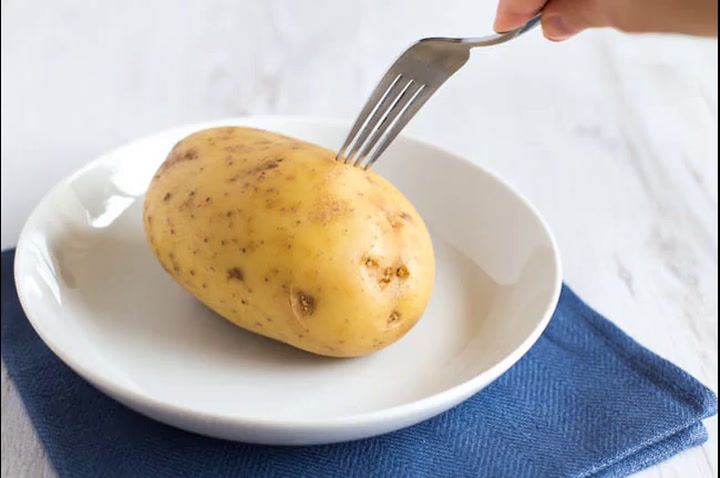Blog
Good Carbohydrates For A Healthier Life.
The first concept you need to learn about is the consumption of what are known as good carbohydrates. Simple versus complex carbohydrates have been dominating our understanding of carbohydrates until the concept of the glycemic index was proposed in 1981.
Since our primary concern is the rate at which our blood sugar rises following a meal, you can now appreciate the fact that a major aspect in determining the quality of carbohydrate you may choose to eat is largely determined by which theory you accept. We are beginning to realise that the concept of glycemic index is the true way to evaluate the effect a certain carbohydrate will have on our blood sugar.
What Is The Glycemic Index?
The glycemic index is defined as the rate blood sugar would actually rise following the ingestion of a particular test food relative to the ingestion of a standard food (glucose).
Therefore, the glycemic index of a specific food or meal is determined primarily by the nature of carbohydrates or carbohydrates consumed and by other factors that affect the digestion of that particular meal (primarily the fat and protein content of that meal). The easier a food or meal is to digest, the higher the glycemic index.
The next important consideration is the quality of nutrients a particular carbohydrate contains. In this present world of highly processed foods, the quality of nutrients a carbohydrate contains varies tremendously.
For example, all of our fruits, nuts, grains, and vegetables are classified as good carbohydrates. These whole foods contain the vital vitamins, antioxidants, and minerals our bodies need to survive.
However, processed white sugar, which is consumed in alarming amounts in the modern world, only contains one molecule of glucose and one molecule of fructose.
Glucose has a glycemic index of 100 while fructose has a glycemic index of 19. Combined together in your normal white table sugar it has a glycemic index of 61. It is important to understand that the glycemic index is important but was never intended to be the only consideration when choosing which carbohydrates you were going to eat.
Processed Carbohydrates – Is this the Enemy?
When you are trying to determine what good carbohydrates are and which are the bad carbohydrates in this world, you need to look at the glycemic index, and the quality of nutrients contained within a particular carbohydrate.
Highly processed carbohydrates are not not good carbohydrates to consume daily and they are certainly destroying your health.
They are all high-glycemic. They are absorbed very quickly into the bloodstream and therefore spike your blood sugar, which stimulates the release of insulin and suppresses glucagon.
The blood sugar is quickly driven down by the excessive release of insulin into the low blood sugar range, and you develop this overwhelming hunger that you have to eat again. Sometimes people just don’t appreciate how dangerous processed foods are to their overall health and weight control, thinking if the foods they are eating are low in fat, then they are good.
The below graph provides an indicator of the spike that potatoes provide over time.
Glycemic Response with White Sugar and Potatoes
You can see that there is very little difference with white sugar and potatos.
I suggest eating potatoes infrequently if you are trying to manage weight but if you were to switch out potato for sweet potato, or Kumara, there is a slight variation to your sugar levels, is it’s a better option.
Whole Foods
When you are on a healthy eating program like the USANA Active Nutrition Transform Kit , you will not have to have a scale, weigh your food, or starve yourself to death if you want to maintain a healthy weight.
You simply need to understand the fact that there are good carbohydrates, good proteins, and good fats that need to be combined together into every meal and snack that you consume.
When you look at whole foods, which are defined as any food man has not messed with, you will find that, with only a few exceptions, they make up the “Good Carbohydrates”. These are foods like apples, oranges, pears, grapes, beans, brussels sprouts, cauliflower, corn, nuts, carrots, and whole grains.
These foods not only contain the vitamins, antioxidants, minerals, good fats, proteins, and carbohydrates our bodies require and need, but they also have a low-glycemic index.
Of course, there are exceptions to this basic rule like white potatoes (glycemic index of 88) but in general, if it has not been processed by man—it is a good carbohydrate.
In direct contrast, is the fact that if it has been processed in any way, it is generally not a good carbohydrate.
For example take slow-cooked raw rolled oats (glycemic index of 42) and compare this to instant oats porridge (glycemic index of 65). This is a major difference in this same food’s ability to spike your blood sugar and your insulin response.
I would consider slow-cooked raw rolled oats a very good carbohydrate to have first thing in the morning.
You must understand that when a food company processes foods, not only are many of the important nutrients necessary for life removed but also they change the structure of the carbohydrate in such a way that the body can absorb it very easily.
Also, you must realise the fact that— because the food loses much of its good taste during the processing procedure—food additives (sugar and high fructose corn syrup are some of the most widely used) must be added back into the food so that it is palatable.
Follow the simple guide listed below to make it easy for you to see very quickly which foods you can safely consume and the ones to avoid.
Desirable Carbohydrates – Should make up 70 to 80% of all the carbohydrates you consume.
Moderately Desirable Carbohydrates – Should make up 20 to 25% of the carbohydrates you consume.
Least Desirable Carbohydrates—should make up only 5% of the carbohydrates you consume.
Now it is important to discuss the various categories of carbohydrates to give you an even better detailed understanding of the factors you must consider when you begin choosing to make changes to your eating habits.
Eat Your Vegetables
Almost all whole vegetables are classified as highly recommended good carbohydrates. They contain vital nutrients and are low-glycemic. They should make up a major aspect of your diet. However potatoes are put in a separate category.
Should You Eat Potatoes?
When you look at potatoes as a category, they are definitely a whole food but they are very high-glycemic and not considered good carbohydrates.
It is the vegetable of choice of western diet.
We will eat them baked, boiled, fried, instant or mashed. Other than breads, this may be the biggest adjustment you need to make in your thinking about your diet. The average baked potato has a glycemic index (GI) of 85.
French fried potatoes have a GI of 75. They are also cooked in lard, beef tallow, or high-temperature vegetable oil, which creates a high-glycemic food that is loaded with either saturated fat or rancid fat.
New potatoes have lower GI (78), and are the potatoes to consume if you have to have potatoes. Sweet potatoes have an average GI of 46.
With that in mind, you should eat the new potatoes and sweet potatoes occasionally.
Eat Your Fruits
Almost all whole fruits are excellent carbohydrates to consume. They contain important antioxidants, minerals, and vitamins that are essential for our existence.
Even though they are sweet, they contain fructose sugar which is low-glycemic (19), and the amount of fructose that occurs naturally in our whole fruits is healthy and will not spike your blood sugar. When we consume too much fructose in foods, soft drinks, sports drinks, and candy, it can overload our liver and cause definite concerns.
Fruits like watermelon and cantaloupe have a higher GI (72 and 65), and bananas have a modest GI of 51, are still considered an excellent carbohydrate as well as papaya, mango, and Kiwi fruit.
There needs to be some caution using these higher glycemic fruits as stand-alone snacks but they make great deserts following a wonderful, low-glycemic meal.
Processed fruits can be dangerous just as can any processed carbohydrates. Fruit juice and canned fruit are the main culprits. It all is a matter of exactly how they have been processed. For example, an orange has a GI of 48 but orange juice reconstituted from frozen concentrate has a GI of 57.
An apple has a GI of 40, while unsweetened apple juice has a GI of 40. However, most of the juices that are available are not 100% fresh squeezed or fresh frozen, but instead, are diluted and sweetened.
This significantly increases the GI. A raw peach has a GI of 28. However, when it is canned in heavy syrup it has a GI of 58. The basic principal is that the more natural the food the lower the GI and consequently the better it is for you.
It can seem a little overwhelming but you don’t need to be an Nutritionist to understand it all.
We generally have 10 to 14 standard go-to meal choices each week. Once you have reviewed the GI value of your meals, you will get an understanding of what needs to be swapped out for a different Low GI food. It will eventually be balanced out and you will be able to know the good carbohydrates for a healthier life.
Are Breakfast Cereals Really Worth Eating?
It becomes apparent very quickly that most breakfast cereals are highly processed and not good carbohydrates.
Some contain so much sugar, that I feel they should be classified as Cake!
Many boxed cereals are going to be high-glycemic, because of the sugar content. This is not the way you need to start your day – or your children’s day! Especially, when you consider most people add two pieces of white or whole wheat toast and a glass of orange juice to their breakfast.
Kellogg’s All-Bran takes the prize when it comes to a highly processed cereal that is low-glycemic (34). If you have ever eaten an All-Bran breakfast you can understand why, it tastes like you are eating the box.
For companies to make a cereal taste good, they usually need to add lots of sugar. This may make the cereal have a moderate-glycemic index but where is the nutritional value?
The highly processed grains that have been used as the basis of the cereal have had most of the quality nutrients removed. This is the main reason that they must fortify most cereals.
The best cereals are the “old-fashioned” slow-cooked cereals like rolled oats and steel cut oats. Yes, they take a little longer to prepare but they are lower glycemic. The grain is intact and has had minimal processing. You will be simply amazed at how well they taste and how satisfying they are.
You can also add some soy or whey protein, or natural sweetener like Stevia to your cereal just as you are finishing cooking it. This will add some needed protein to your meal and add to the flavor and satisfaction of your breakfast.
Let’s Talk About Breads
The most difficult change you will have to make is avoiding white bread, white flour, wheat flour, and almost every processed bread, so we’d consider it not good carbohydrates unless they are mixed in with some grains which could help to balance out the GI.
White bread has a GI of 70. Whole wheat bread (made from wheat flour) has a GI of 77.
Now this makes your choice of whole wheat bread over white bread a mistake when you consider the glycemic index. White Wonder Bread (enriched) has a GI of 73. Bagels have a GI of 72. Highly processed whole wheat bread and white bread actually spikes our blood sugar and insulin faster than table sugar.
Avoiding white bread along with potatoes in all its processed forms is the major culprit and challenge. Try to go out for a meal and avoid white bread, white flour, pasta, rice, and potatoes in the Western diet.
It is nearly impossible unless you are willing to take back control of your health. The choice is yours. Try to totally avoid all sugar, bread, potatoes, rice, and pasta during any sort of healthy eating regime.
You don’t need to completely cut it out, if you eat it at a restaurant or while you’re cooking for friends, it’s okay. But if you are trying to manage weight, you may just want to remove it from your day-to-day eating program.
Obviously, you want to begin eating breads that are made the old-fashioned way. You want bread that is made with whole, intact grains—not wheat or white flour.
These grains should be stone ground and not the result of high-speed grinders. They are simply difficult to find. Most brands that use whole wheat flour will also combine this with wheat or white flour to maintain the fluffy, light bread that tastes so good. Whole grains make the bread drier and coarser and frankly just don’t sell as well.
Eating coarse rye kernel (pumpernickel) bread is a step in the right direction because it has a GI of 50. Whole oat bran bread has a GI of 45. Another trick is to eat sourdough bread because the lactic acid it contains causes a decrease in the rate of absorption and lowers the GI of wheat bread to 53.
Let’s Discuss Cookies, Cakes, Donuts, Crackers & Snack Foods.
These type of foods are the least desirable carbohydrates, but probably are the hardest to give up. One simple rule to follow – If it tastes good, then don’t have it. Sad, I know.
It is quite understandable that you are not going to give up desserts and sweets forever. However, you need to have a great respect for these foods because it is so easy to get back into the carbohydrate addiction.
By now, fruits should taste very sweet to you. Whole fruits offer you a tremendous way to satisfy that sweet tooth without spiking your blood sugar, so again, we’d consider these good carbohydrates.
Conclusion
Eating good carbohydrates for a healthier life is a choice. It’s up to you if you choose to take some different approaches in life. If there is a reason to, like a family history of something, or you’ve had a health scare – decide to change.
Don’t forget your keep improving your gut health and take Probiotics to help digest your food. Look after your microbiome because it’ll look after you long-term.
